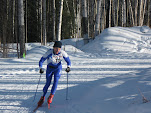Dodging fires and micron bullets
Year - Acres burned (millions)
2004 - 6.7 mi
1956 - 5.0
2005 - 4.5
1969 - 4.2
1990 - 3.2
2009 - 2.4 (as of 8/4 and growing!)
1977 - 2.4
2.4 million acres, so how big is that? It's bigger than Rhode Island and Delaware combined--or about 2/3 the size of Connecticut. It's bigger than the entire Yellowstone National Park.
Fire is a natural ecological process in this part of the world and they are to be expected. In Alaska the land is vast and mostly uninhabited, so the interagency fire management policy is to have a prioritized system where fires in remote areas are allowed to burn indefinitely, while those close to communities or cabins are attacked with the best available resources.
This is very unlike most places in the lower 48, where almost any fire is dispatched.
As a result Alaska gets huge fires that burn for months. Right now, within 60 or 70 air miles of Fairbanks, we have the massive Railbelt/Minto flats Complex (440,000 acres) to the west, the Wood River fire (110,000) acres just to our south, as well as a 330,000 acre complex in the northeast. The Railbelt fire started in June, and for weeks it received minimal protection--just not much to burn out there but spruce bog.
Things are not as threatening as 2004, when a million acre fire complex torched the lands, to within 15 miles of town while taking out dozens of structures. Nevertheless this is a bad year.
And it's hell on running.
You have to be creative, flexible, and maybe a little bit stupid to keep your running going under these conditions. It's not toxins per se, e.g., there's nothing like nicotine out there, but particulate matter can cause health problems.
Scientists have developed a 6 level chart that depicts particulate matter and associated health risk. The bad stuff is PM 2.5, or particulate matter that is 2.5 microns or less. You can't even see particles that small but it gets into your lungs and can cause asthma and possibly other long term health effects.
Category - (parts per sq meter)
Good - (1-50)
Moderate - (51-100)
Unhealthy - for Sensitive Groups (101-150)
Unhealthy - (151-200)
Very Unhealthy - (201-300)
Hazardous - (301-500)
While the rest of the country has enjoyed good to moderate PM 2.5 this week, interior Alaska has hovered in the Unhealthy for Sensitive Groups to Very Unhealthy range. Currently it is Very Unhealthy. You can see about a mile.
Running has been dicey. The trick is to get out the door (quickly) when the wind shifts and blows the smoke away, or at times when the smoke is less pressed to the ground (often afternoon or early evening), or by finding refuge at a high point above the particulate fray.
On Sunday, while Fairbanks and most of the surrounding area was shrouded in Unhealthy condititions, I went for a wonderful 15 mile run on Murphy Dome with a runner whom I had coached for a couple of years. At approximately 2500 feet we were about 20 miles north of town and breathing relatively clean air, above the smoke. Only at the end did the haze begin to close in.
Alas that didn't last: a dangerous and fast moving fire broke out Monday on Murphy Dome. It was only discoverd in the early afternoon but by the end of the day it grew to almost 1,000 acres. This is close to cabins and sub-divisions, so this will be a high priority fire.
The tree falls analogy certainly pertains to so many aspects of interior Alaska. With only 90,000 to 100,000 people living in an area twice the size of Montana, nobody hears about it when the forest burns.
Wish us luck and I'll try to keep dodging the smoke and getting in some good mileage.


0 Comments:
Post a Comment
Subscribe to Post Comments [Atom]
<< Home